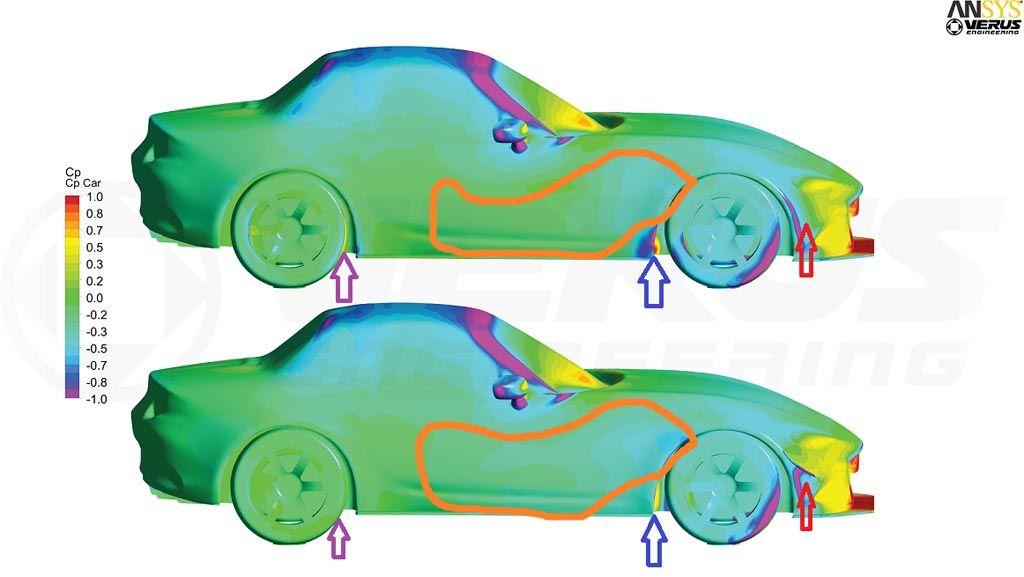As we continually learn and improve our post-processing abilities, we are able to visually show you guys more about what our products are doing to the vehicle’s body and how it is influencing the fluid flow around it, instead of just rattling off numbers. Side note, for reference, the MX5 ND Miata dive planes increase downforce by 54 lbs at 100MPH while reducing drag by 14lbs.
We have done a short “beginners” guide to dive planes, HERE. We will be diving a bit deeper this time with our ND Miata dive planes! You may have heard us say things like, “create strong vortices” and “help seal the sides of the car.” We will be illustrating these below.
Strong Vortices:
Vortices are a mass of whirling or spinning fluid, in the case of vehicles, the fluid is air. You can think of these vortices like very small tornadoes. These vortices can be used to benefit vehicle performance when placed correctly. Sometimes vortices can be seen with streamlines, though they generally have to be quite strong.

Q-criterion is a better way to see vortices with CFD. This highlights vortices by adding smoke to the flow field in areas with vorticity. Q-criterion can pick up both strong and weak vortices.

Help seal the sides of the car:
By sealing the sides of the car, we are able to reduce high-pressure regions that hurt performance and create low-pressure regions that aid vehicle performance.

The high-pressure region on the top dive plane surface aids front-end downforce production.

Reduce pressure region in front of the rear wheels, reducing drag.
Increased low-pressure region behind the front wheel, aiding in fender well evacuation.

Increase low-pressure region below dive plane, aiding in downforce production.
With proper engineering, dive planes and various other aero components can have a positive impact on vehicle performance. Vortices, when properly placed are a great way to improve the aerodynamics of vehicles. This is one of the many reasons why we stress on analyzing our products during our design process. Aerodynamic devices can negatively or positively affect vehicle performance, we tend to stick to the latter.
As always, if you have any questions feel free to send us an e-mail!
In Depth Understanding of Dive Planes on the ND Miata